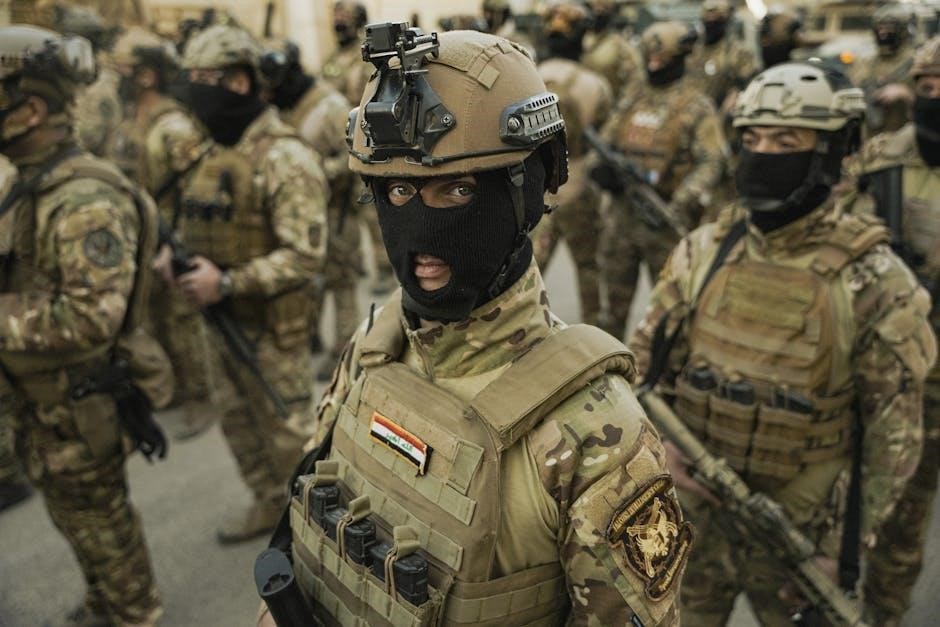The STNR reflex plays a crucial role in posture, movement, and overall motor development. Improper integration can lead to challenges in coordination and balance. Targeted exercises like Cat/Cow and Crawling on the Tummy aid in integrating this reflex effectively;

Overview of STNR Reflex
The Symmetrical Tonic Neck Reflex (STNR) is a primitive reflex that plays a pivotal role in the development of posture and movement. It is characterized by a symmetrical response in the neck muscles, facilitating balanced coordination between the head and body. Typically present in infants, the STNR Reflex aids in the transition from involuntary to voluntary motor control, essential for tasks requiring neck stability, such as sitting upright and coordinating hand movements.
As children develop, the STNR Reflex should integrate into voluntary motor patterns, allowing conscious control over neck movements. However, if integration is incomplete, it may result in challenges such as poor posture, difficulties in focusing, and impaired fine motor skills due to insufficient head stabilization. This, in turn, can affect balance and coordination, highlighting the importance of proper reflex integration for overall motor development.
Importance of STNR Integration
Proper integration of the STNR Reflex is vital for achieving optimal motor control and coordination. When the reflex is not fully integrated, it can disrupt posture, balance, and fine motor skills, leading to difficulties in activities like writing, reading, and sports. This is because the STNR Reflex influences the stability and alignment of the head and neck, which are foundational for accurate eye movements and hand-eye coordination.
Successful integration of the STNR Reflex enhances overall motor development, enabling smoother transitions between movements and improving focus during tasks. It also supports better coordination between the upper and lower body, reducing the likelihood of clumsiness or poor posture. Addressing STNR integration is particularly important for children, as it lays the groundwork for advanced motor skills and academic performance, ensuring a strong foundation for physical and cognitive growth.

Tests for STNR
The STNR Reflex can be assessed through specific tests, such as the ball-catching exercise, where the child curls their body to catch a ball, and head movement tests while on hands and knees.
How to Perform the STNR Test
To perform the STNR test, start by having the child lie on their back. An adult should hold a ball above the child’s shoulders. On the count of three, the adult drops the ball. The child should attempt to catch the ball using both arms and legs, curling their body around it. Encourage the child to take a deep breath while squeezing the ball tightly before returning to the starting position. Another method involves having the child get on their hands and knees with their head straight and facing the floor. Ask the child to look to one side and then the other. If the child’s shoulders move along with their head, it indicates the STNR reflex is still present. These tests help assess the integration of the STNR reflex, which is crucial for proper motor development and posture.
ATNR Test Overview
The Asymmetrical Tonic Neck Reflex (ATNR) test evaluates the presence of this reflex, which is crucial in early development. To perform the test, have the child lie on their back. An adult holds a ball above the child’s shoulders. On the count of three, the ball is dropped, and the child should attempt to catch it using both arms and legs, curling their body around it. Encourage deep breathing while squeezing the ball tightly before returning to the starting position.
Another method involves the child getting on their hands and knees with their head straight and facing the floor. Ask the child to look to one side and then the other. If the child’s shoulders move along with their head, it indicates the ATNR reflex is still present; These tests help assess the integration of the ATNR reflex, which is crucial for proper motor development and posture.

Exercises for STNR Integration
Exercises like Cat/Cow, Crawling on the Tummy, Bear Walks, and Wheelbarrow Activity are essential for integrating the STNR reflex. These activities promote proper posture, balance, and coordination by strengthening core and neck muscles naturally.
Cat/Cow Exercise
The Cat/Cow Exercise is a gentle and effective activity designed to promote STNR reflex integration. It involves moving the spine through a series of arching and rounding movements, mimicking the postures of a cat and a cow. To perform the exercise, the child should start on their hands and knees with their head in a neutral position; As they inhale, they arch their back, lifting their head and tailbone (like a cow). On exhaling, they round their spine, tucking their chin toward their chest and their tailbone toward the floor (like a cat). This movement helps improve flexibility, posture, and coordination while strengthening the neck and core muscles. Regular practice of the Cat/Cow Exercise can enhance the integration of the STNR reflex, leading to better overall motor control and balance. It is often recommended as a foundational exercise in reflex integration programs.
Crawling on the Tummy
Crawling on the tummy is a highly effective exercise for promoting STNR reflex integration. It involves the child moving their arms and legs in a crawling motion while lying on their stomach. This activity strengthens the neck muscles and enhances coordination by encouraging the head to move independently of the shoulders. As the child crawls, they naturally alternate between extending and flexing their neck, which helps break the automatic link between neck and shoulder movements. Regular practice of this exercise improves posture, balance, and overall motor skills. It also fosters hand-eye coordination and upper body strength, which are essential for proper reflex integration. By performing this exercise for 5-10 minutes several times a week, children can gradually develop better control over their movements. Consistency is key, as it allows the brain to rewire and integrate the STNR reflex more effectively. This activity is often recommended as part of a comprehensive reflex integration program.
Bear Walks
Bear Walks are an engaging and effective exercise for integrating the STNR reflex. To perform Bear Walks, the child starts on their hands and knees. They then walk forward on all fours, keeping their arms straight and their head in a neutral position. This motion mimics the movement of a bear, hence the name. Bear Walks strengthen the muscles in the shoulders and neck, which are crucial for proper posture and movement. By performing Bear Walks regularly, children can improve their coordination and balance. Additionally, this exercise helps in separating neck movements from shoulder movements, which is essential for STNR integration. It is recommended to practice Bear Walks for a few minutes each day to see noticeable improvement in motor skills. Consistency in performing this exercise yields the best results for reflex integration.
Wheelbarrow Activity

The Wheelbarrow Activity is a fun and interactive exercise designed to promote STNR reflex integration. In this activity, the child starts in a prone position on their hands and knees. An adult or caregiver gently holds the child’s legs just above the ankles, ensuring the knees are slightly bent. The child then moves their arms forward, walking on their hands while the caregiver supports their legs, mimicking the motion of a wheelbarrow. This exercise strengthens the muscles in the arms, shoulders, and neck, which are essential for proper posture and movement. It also helps in developing coordination and balance. Regular practice of the Wheelbarrow Activity can significantly enhance motor skills and aid in the integration of the STNR reflex. Parents and therapists often find this exercise both effective and enjoyable for children, making it a valuable addition to a reflex integration program.

Signs of Successful Integration
Successful integration of the STNR reflex is marked by improved posture, movement, and coordination. Children may exhibit better head control, with the ability to maintain neutral alignment during activities. They often show enhanced balance and reduced difficulties in transitioning between positions, such as sitting to standing. Improved fine motor skills, like handwriting and using utensils, may also emerge. Parents and therapists might notice smoother, more deliberate movements, indicating better integration of primitive reflexes into voluntary motor patterns. Increased confidence in physical activities, such as crawling, walking, or climbing, is another positive sign. Additionally, children may demonstrate better focus and attention, as the reflexes are no longer interfering with higher-level cognitive functions. These improvements collectively signify that the STNR reflex has integrated effectively, allowing for more efficient and coordinated motor responses. Regular practice of targeted exercises and activities plays a crucial role in achieving these outcomes.



